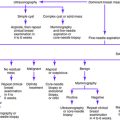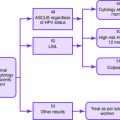Chapter 7 BREAST PAIN
Breast pain, or mastalgia, is a very common complaint in women and represents the most common symptom in women seeking breast evaluation. Breast pain can be divided into three general categories: cyclic breast pain, noncyclic breast pain, and extramammary pain.
Medications That Can Cause Breast Pain
Causes of Breast Pain
Key Historical Features
✓ Location, quality, timing (cyclic vs. noncyclic), relationship to exercise, and severity of the pain
✓ Associated symptoms such as redness, swelling, lump, or nipple discharge (can help focus the examination)
✓ Gynecologic and reproductive history
✓ Family history, especially of breast cancer and coronary artery disease
Key Physical Findings
The physical examination should be guided by the history and may include the following evaluations:
✓ General evaluation of health status
✓ Abdominal examination for tenderness, distension, guarding, mass, organomegaly, or rebound
Initial Work-Up
| Mammography | If the pain is localized to the breast and if the patient is aged 30 years or older |
| Breast ultrasonography | Useful for evaluating for a mass at any age in patients with localized breast pain |
| Fine-needle aspiration or biopsy | Should be performed if a mass is palpated |
| Pregnancy test | If the patient is of childbearing age |
Additional Work-Up
| Radiography | If the pain is not localized to the breasts, chest radiography should be considered to evaluate the bony structures of the chest as well as the lungs and heart |
| If the patient has had trauma and the pain is localized to other structures, obtain the appropriate x-ray, such as clavicle, rib, or shoulder | |
| Electrocardiography | If the patient’s pain is typical for cardiac pain or the patient has risk factors for coronary artery disease |
| Cardiac stress test | If the patient has typical chest pain or risk for cardiac disease; options include treadmill stress test, stress echocardiography, or cardiac nuclear perfusion scan |
| Abdominal ultrasonography | If the examination findings are suspect for cholecystitis |
Millet AV, Dirbas FM. Clinical management of breast pain: a review. Obstet Gynecol Survey. 2002;579:451-461.
Morrow M. The evaluation of common breast problems. Am Fam Physician. 2000;61:2371-2378. 2385
Smith RL, Pruthi S, Fitzpatrick LA. Evaluation and management of breast pain. Mayo Clin Proc. 2004;79:353-372.




